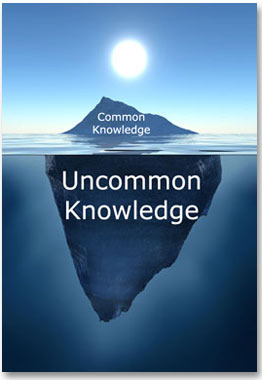Fat does not clog up our arteries

If a juggernaut were travelling around the road transport system – which roads would clog up? The minor roads and country lanes would be impassable and the motorways would continue to run with little disruption. Fat never clogs veins. By a process of common sense, therefore, fat also never clogs arteries. It would make no sense whatsoever that the only parts of the blood circulatory system that got clogged up were the ‘motorways’ – the widest and the fastest flowing pathways.
Without getting into the detail of different chain length fatty acids, it is a reasonable assertion to make that fat is not even travelling freely in the blood stream. Fat and water don’t mix so, since blood is effectively water, fat cannot travel freely around the blood system. Fat travels around in lipoproteins – along with cholesterol, protein and phospholipids. The idea that fat somehow leaps out of the lipoproteins to attach itself to the arterial wall to try to clog up the system and kill us is ludicrous at every level.
The far more likely explanation for narrowing of the arteries is that the wall of the arteries (called the endothelial wall), quite uniquely, can suffer damage such that a ‘lesion’ (think of a lesion as a ‘scab’), forms. The body is so clever and self protective that the body cannot and does not risk the scab breaking away and freely floating in the blood stream – as this could cause a blockage. The lining of the endothelial wall tries to repair itself and forms a new layer over the scab – sucking the scab back into the lining of the artery wall in so doing. That’s how smart and life preserving our bodies are. The trouble is – if we continue to be exposed to whatever was damaging the lining of the arteries (suspects are smoking, processed food, pollution, stress – modern aspects of modern life implicated in a modern disease) – we continue to form lesions. We only need too many ‘scabs’ in one area, and the repair kit being unable to keep up, and we could be in trouble – big heart attack or stroke kind of trouble.
This brings us on to the ‘repair kit’. The best repair nutrient of all – the body’s chief anti-oxidant, anti-blood-clotter and repairer of blood vessels is vitamin E. Another trouble is – vitamin E is a fat soluble vitamin, found in nature’s real fat foods (meat, fish, eggs etc), which we are continually telling people to avoid! Another huge irony is that cholesterol and fat are the two main repair substances in the body. So, a lesion forms and cholesterol will head to the area to do its repair job and to try to fix the scab. Then, if the person dies because there’s only so much cholesterol can do, pathologists find cholesterol around the scab – at the scene of the crime so to speak – and blame cholesterol for causing the damage. How unfair is that?! Police are always at the scene of the crime, but no one accuses the police of committing all the crimes!
When will we see the most obvious fact of modern life and modern illness? Man-made things are harming us and nature’s natural things have always been there to help us. The more we have of the former and the less we have of the latter, the more ill health we risk.
The final trouble is that food, drink and drug companies are bigger than many countries and they want to grow even bigger. Food and drink makes us fat and sick and we then need drugs and surgery to manage obesity, diabetes, cancer, heart disease, damaged joints and limbs – it is a perfect symbiotic relationship.
Good fats are those made by nature; bad fats are those made by man – that’s all we need to know. The idea that unsaturated fats are good and saturated fats are bad is actually quite funny if you know the composition of food…
Nature puts saturated, monounsaturated and polyunsaturated fats in foods in the ‘right’ measure. As an example – in 100 grams of pork chop (United State Department of Agriculture example food – pork chop, boneless, raw, lean and fat), there is no carbohydrate, there are 21 grams of protein and 4.2 grams of fat. The rest is water (75%). Of the 4.2 grams of fat, 1.5 grams are saturated and 2.7 grams are unsaturated. The (very small) part of this pork chop that is fat is 47% monounsaturated fat, 40% saturated and 13% polyunsaturated fat. Do we really think that the 40% of our pork chop is trying to kill us while the 47% monounsaturated fat is trying to save us – presumably with the 13% polyunsaturated fat providing backup? It is utterly ludicrous.

Pingback: RANT – The cellular Season – part four | Just ME in T's Health Stuff